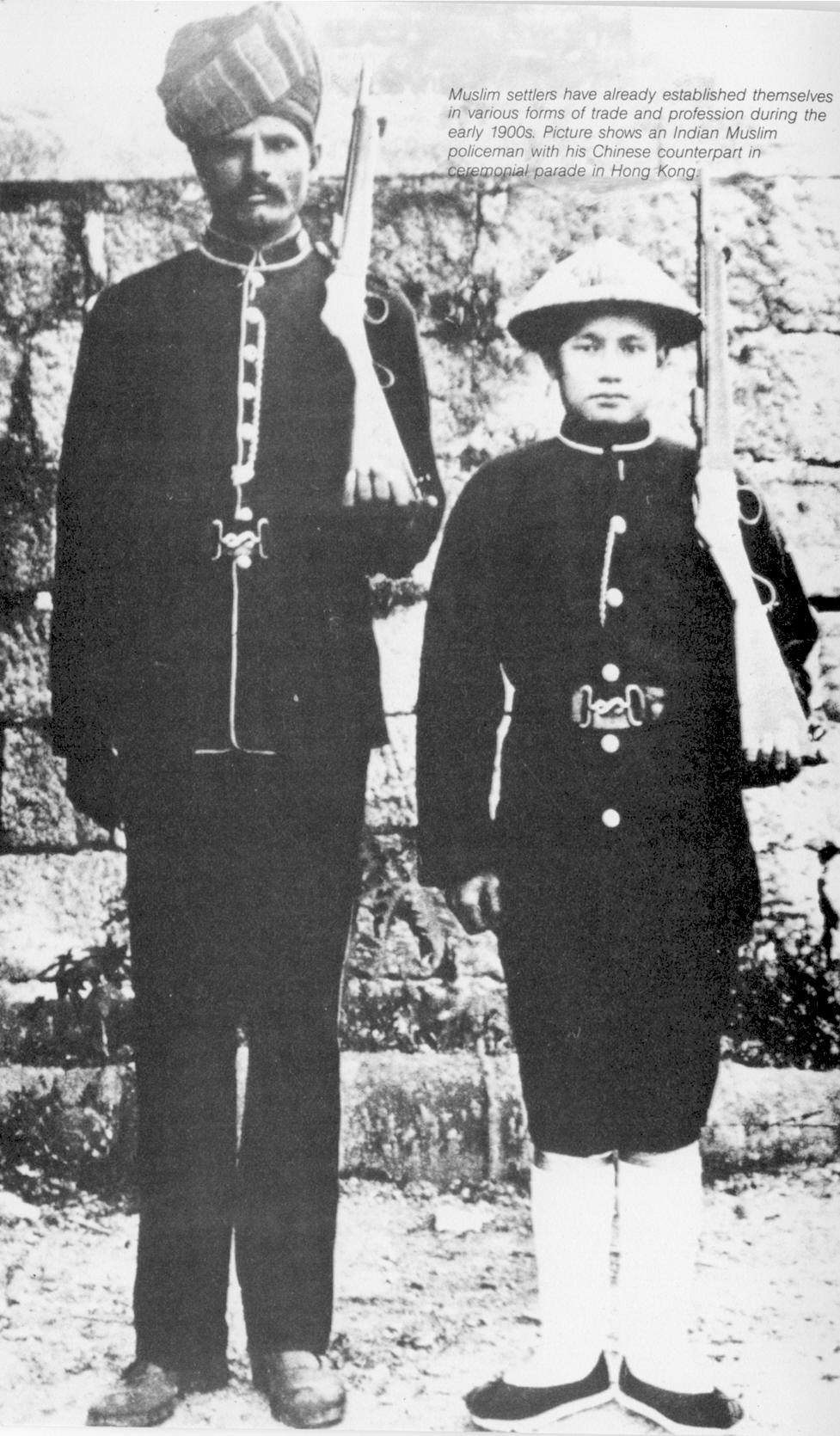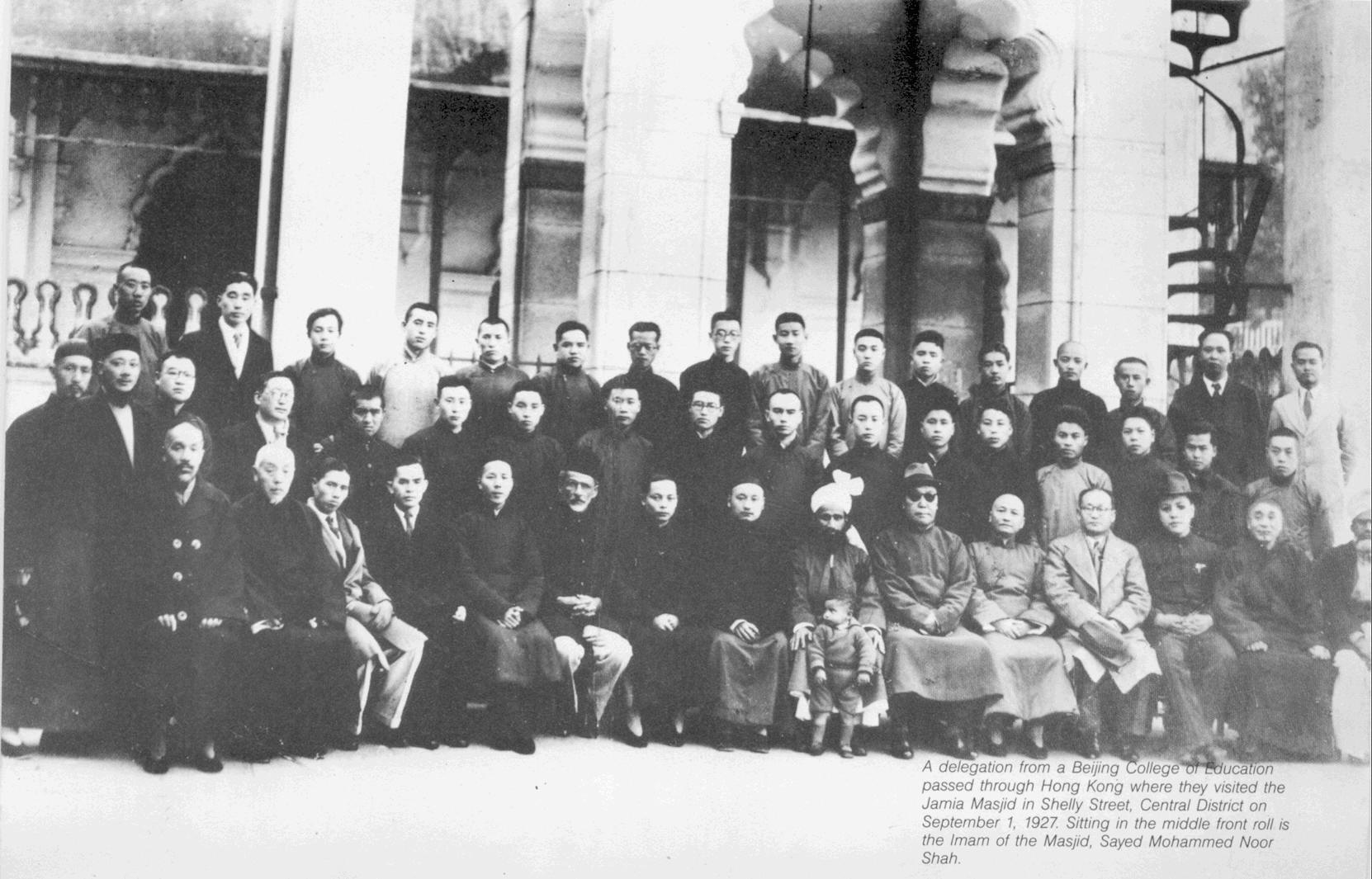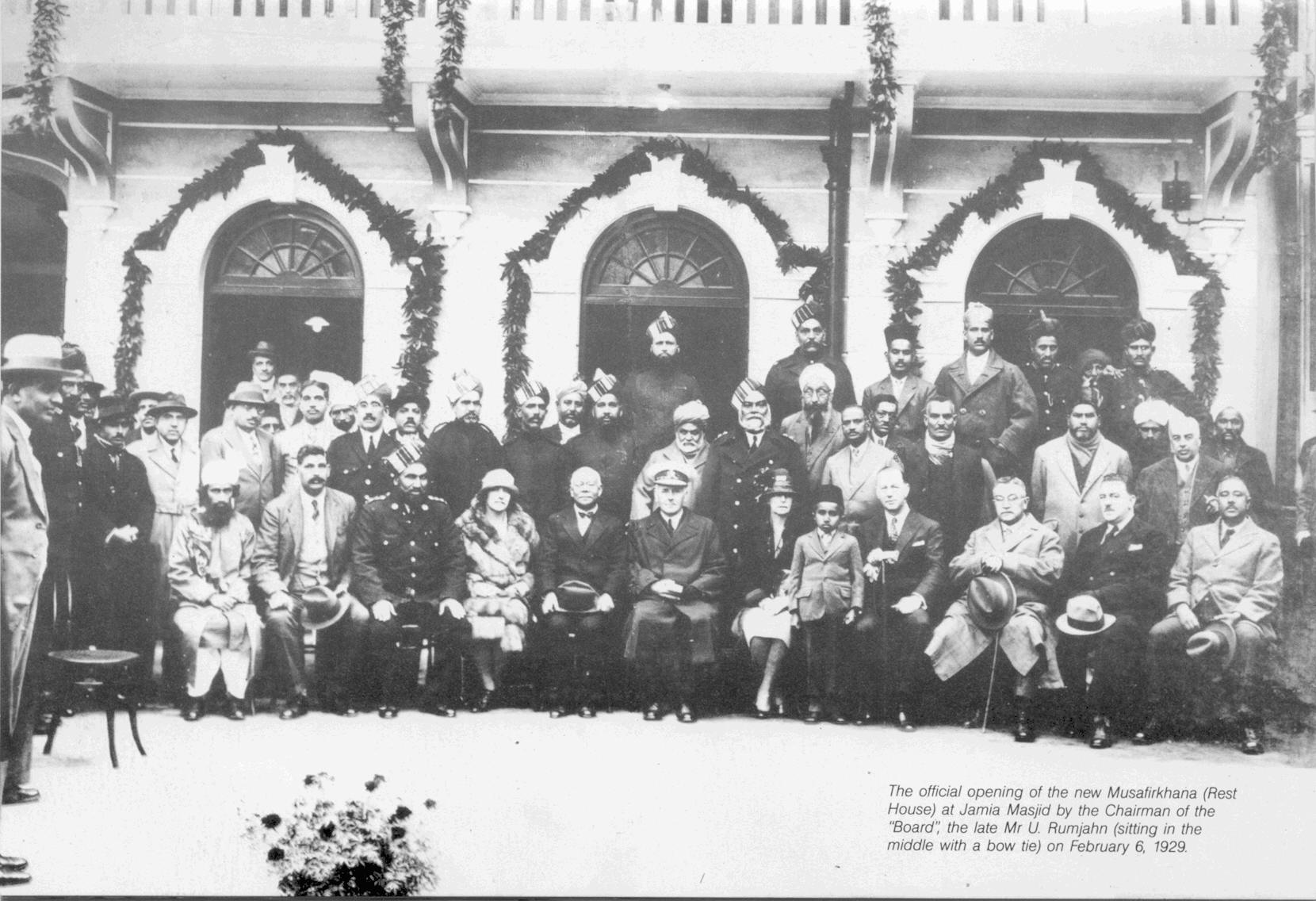HOW MUSLIM SET FOOT IN HONG KONG
Before the Island of Hong Kong was ceded to Britain by the Viceroy at Canton (Guangzhou) in January 1841, Hong Kong was a tiny part of San On District of Kwan Tung Province. At that time the population of the Island was only about five thousand (as compared with 5.3 million today) consisting mostly of farmers and their families living in the valleys, and fishermen living on boats along the sheltered coast.
The first British ships to sail into the Chinese waters were those of East India Company (where most of the crew were recruited) from Calcutta in India for trading between the various posts from India to Japan. The East India Company's trade with China reached its peak in the early 19th century and seamen were then mostly signed on from Bombay and Calcutta by the British first opium clipper which was then a wooden boat known as "Red River," built by Jardine & Matheson in Calcutta in 1829. Since then it had opened the gate for the early Muslims settling down in Hong Kong.
Hong Kong means "Fragrant Harbour" and the early seamen mostly came from the shores of Malabar (India), Bay of Bengal, Campbellpur (Attock), Hazara (Abbottabad), Lahore, and Gujarat. Besides those others came from Shanghai, Aden (Yemen), Java, Sumatra, Malacca, Malaya (now Malaysia), Sarawak, South-Sea Borneo, Brunei, Port Said (Egypt), Turkey, Zanzibar (Tanzania).
With Hong Kong beginning to develop into an important seaport for the British, more and more seamen and garrisons were passing through and some settled here, like Chinese Turkestan, Burmese, Ceylonese, Indo-Chinese, white Russians from both Russia and Harbin, Moros from the South Philippines and Arabs etc.
During the early 19th century many Muslim seamen had no proper accommodation or dormitory but somehow or other they managed to stay well-knitted together in an area known as Lower Lascar Row - in the Central area, better known to the Hong Kong old timers as "Moro Kai" (streets of the people of the Moros). The Muslim seamen held their first Jamat (gathering) in an open street at Lower Lascar Row, and continued to do so for a time. In those days the non-Muslims never dared to pass through that street after marketing for fear of hurting the Muslims' feeling when they held pork and walked along while the Muslims were having their "Salat." Years later with hundreds of the Muslims and their families having vacated their shops and residences for elsewhere in Hong Kong, their shops were taken over by Chinese traders selling Curios, Old Scrolls and Relics and these streets of Lower Lascar Row are now better known to many tourists as the "Cat Street."
With Hong Kong already well established under Britannia more and more Muslims were heading this way from India (principally Punjabis) filling most of the post as Hong Kong Police Constables, Marine Guards, Prison Guards, Dockyard Guards, Watchmen, Bank Clerks, Royal Naval Dockyard Police, Ferry Supervisors, Post Office Mail Launch Guards, Sanitary Foremen and Government Drivers.
As more Muslim garrisons stationing here the Islamic Culture had spread and the whole Muslim community began to form bodies to represent the various sections of the Muslim Society. It was then that the 'Board' of Trustees was formed, and has since been an official body recognized by the Hong Kong Government in the early 20th Century.

The Muslim garrison was in fact one of the early pioneers in arranging a place for "Salat" (worship) while stationing in Kowloon Peninsula, for they requested their superior commanders for a site large enough to hold gatherings of several hundred worshippers especially for the "Eid" and "Juma" prayers, and that request was granted to them with a temporary site allotted inside the Whitfield Army Barracks between Austin Road and Nathan Road.
After six years the first Mosque in the Kowloon Peninsula was built in 1896. The grand Moorish type Mosque was built entirely by the Muslim garrisons with assistance from their respective commanders.
Besides the Mosque the garrisons also constructed a large concrete pool for storing up water for worshippers to make "Wudhu," and water plants and large gold fish were put inside the pool to prevent the water from pollution. Quarters were also erected for the Maulvi and Mussafir Khana (Rest House for wayfarers). The Muslim garrisons also brought their own Maulvi from Campbellpur (Attock) in Pakistan
The Muslim garrisons ventured further and took another giant step forward by requesting their Commanding Officers for a burial ground in the Kowloon Peninsula for the Muslims who passed away while stationed in Hong Kong. The request was also granted and a temporary site was given to them at Homantin Hill (just behind the present Pui Ching School in Waterloo Road. Every Sunday, the Muslim volunteers would, join forces and develop the area fit for burial. A small Mosque was also built to conduct the "Janaza" prayer. Besides they also managed to dig a well for water to wash the "Miyat" (dead body) and for domestic purposes. The yield of the well water had attracted many residents of the whole Homantin flocking to the Mosque & Cemetery to obtain the water from the well. They named the Mosque & Cemetery "Mora Garden" for its beautiful surroundings and the fresh and cool water from the well.
At the same time, Muslims on Hong Kong island spear-headed by the 'Board of Trustees' began to gather strength to build a Mosque in the mid-level area and a piece of land was leased by the Hong Kong Government for them to build a Mosque at No. 30, Shelley Street. In 1890 the Mosque was built by contributions from only a handful of worshippers and was named "Mohammedan Mosque." In 1905 the Shelley Street Mosque was re-built to a much larger Mosque. After World War II the name was changed to "Jamia Masjid" by the 'Board of Trustees.'
In addition to the area on which the large Mosque was built, there were also three garden plots surrounding the area and special quarters were provided for the Maulvi, Mussafir Khana, "Yatim Khana" (home for the widows and orphans), as well as places for Wudhu and changing room for worshippers.
Hong Kong has now over 30,000 Muslims consisting of various nationalities but with one aim -- to strive for the better the future of our Muslim Community in both unity and understanding. HOLD FAST UNTO THE ROPE OF ALLAH is our motto.
With Allah Taala's Mercy and Guidance, we hope Insha-Allah to live like a Muslim and die like one. Ameen.





No comments:
Post a Comment